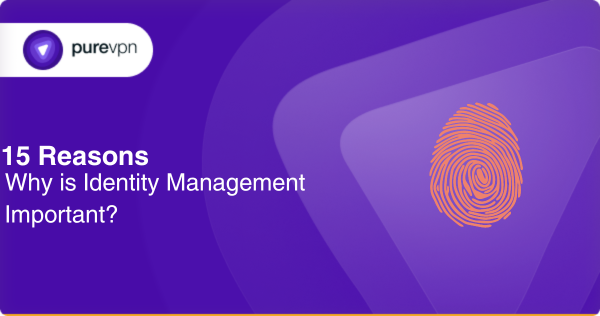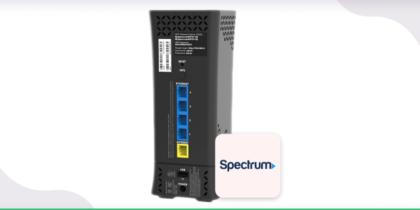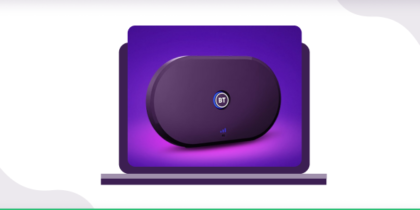Table of Contents
Data protection and cyber security are now more vital than ever, with cybercrime increasing to an all-time high. And what’s worse is that it’s expected to increase further by a whopping 15% in the next five years.
One field you must focus on and stay up to date with to combat cybercrime is identity management [IdM]. Methods integrated into IdM strategies can prevent fraudulent access to your data by reinforcing your system’s security.
But what exactly is IdM, and why is it important?
In this article, you’ll find all the answers to your questions about IdM and why experts believe it’s important for all organizations, individuals, and agencies. So, keep reading to discover how to protect your network’s common entry points from hackers.

First order of business; learning what identity management is
If you’ve never had to deal with a stolen identity like this, this, this, or countless other victims, you’re extremely fortunate, given that about 1 in 15 people become victims of this crime. But this also means that you may not be aware of what identity management is – let alone know its importance. Let’s change that!
Simply put, IdM is like keeping track of a set of keys that give you access to various places. You may use these keys for your home, car, and office. Similarly, you have different identities for your online accounts, such as your banking accounts, social media, and email.
IdM is what helps you keep these identities secure and control who has access to them. It’s similar to having a personal bouncer who checks everyone’s ID before letting them in.
How it works
Identity management is a complex process with different technologies and processes working together to ensure online identity security and privacy. It involves several key components working together to ensure the integrity and security of an individual’s online identity. Let’s take a look at each of them to understand how IdM works:
- Authentication
Authentication is the process of verifying the identity of a user before granting them access to an online account. This can involve using passwords, biometric identifiers, such as fingerprints or facial recognition, or security tokens that generate codes to access an account.
- Authorization
This involves granting or denying access to specific resources or information based on the authenticated identity. Authorization may involve setting permissions and access controls for different users or groups of users, ensuring that sensitive data is only accessible by authorized individuals.
- Identity governance
Identity governance includes policies and procedures organizations may implement to manage and protect online identities. This can include regular audits of access controls, setting up workflows for onboarding and offboarding employees, and establishing protocols for managing identity-related incidents such as data breaches.
- Identity data management
Identity data management includes collecting, storing, and using personal information. You must protect this data from unauthorized access or misuse and have control over your data. Moreover, you must also be able to access and update your data whenever needed.
Don’t think identity management is for you? These reasons will convince you otherwise
Now that you have an idea about what IdM is and how it works, it’s time to look at some reasons why identity management is important for you. Here are some of the many reasons why identity management is important for all:
- IdM enhances security
IdM provides a secure and reliable authentication process, enhancing your online security. It ensures that only authorized individuals have access to your sensitive data and resources. Consequently, IdM reduces the risks of data breaches and other security incidents.
For example, by implementing strong authentication methods, such as multi-factor authentication [MFA], you can make it more difficult for cybercriminals to gain unauthorized access.
- It reduces the risk of data breaches
Data breaches and cyberattacks are increasing yearly, making it necessary for organizations and individuals to take adequate data and resource protection precautions. And IdM is one of the most effective ways to achieve that.
It offers a comprehensive approach to access management to ensure that only authorized individuals have access to your sensitive data and resources. This means that if a hacker gains access to an employee’s login credentials, they won’t be able to access sensitive information or systems.
This is because the hacker will need to pass through additional layers of authentication provided by IdM. Moreover, it prevents hackers from accessing systems and resources through stolen or guessed passwords with MFA.
- You can use it to streamline access management
Does managing numerous applications, systems, and data seem like a daunting task to you? Identity management can help you with that by streamlining access management. It makes it easier for businesses and individuals to manage user identities, permissions, and access to resources.
You can centralize access management across different systems and applications, creating a single source of truth for user data with IdM. This especially helps administrators in managing access controls from a single location. As a result, it’s easier to grant, revoke, or modify access rights.
- It enhances user experience and facilitates compliance
IdM is known to improve security and enhance the user experience. It does so by simplifying the login process and reducing the need for multiple credentials. This means that with IdM, you can enjoy a relatively more seamless login experience across various applications, systems, and devices.
Who has time to memorize multiple usernames and passwords?
- It enables you to increase efficiency and save time & resources
Automating access management processes can save time and resources for more critical business operations. These could include user provisioning, de-provisioning, and access requests.
Furthermore, it removes administrative overhead, enhances response times, and increases overall efficiency. It does so with its centralized system for managing user identities, permissions, and access to resources.
You can also implement policy-based access controls to ensure users have access only to resources they need to perform their job functions. As a result, employees will spend less time searching for the needed resources and increase their productivity and efficiency.
- IdM is great for business continuity
IdM is great for mitigating the risks associated with business disruptions, ensuring business continuity even under unexpected circumstances. Its centralized system can help you quickly and efficiently revoke access to critical resources to reduce the risk of unauthorized access and data breaches.
In addition to this, it can also help you recover from unexpected events relatively faster with its simplified process of restoring access to resources. You can quickly provision user access and restore permissions to ensure your business can return to normal operations as soon as possible.
- It improves accountability
IdM enables you to implement policy-based access controls and monitor user activity in real-time. As a result, this helps improve accountability by ensuring that users access only the resources they are authorized to access and their actions are being audited and tracked.
Moreover, whether there’s a security breach or you want to identify potential threats, you’ll easily be able to do so with detailed logs of user activity. Consequently, it helps reduce the risk of data breaches and other security incidents. It also prepares you to implement necessary measures in case of a security threat quickly.
- It supports digital transformation
Want to remain competitive by adapting new technologies and transforming your business? IdM can help you with such digital transformations and make the process relatively easier. Its centralized system can ensure that your employees have the access they need to use new technologies and applications effectively.
- It enables personalization and enhances data quality
You can personalize your services and enhance data quality with IdM as it provides a better understanding of your customers or users. You can collect and analyze user behavior, preferences, and demographic data for this purpose.
For example, you can use it to collect data about a user’s browsing history, purchase behavior, and interests to offer them tailored promotions and recommendations. Doing so effectively can lead to increased customer engagement and loyalty.
Furthermore, it also ensures that user data is accurate and up-to-date. IdM can reduce the risk of data errors and inconsistencies by ensuring user data is consistent across all systems and applications.
- You can use IdM for remote work
Courtesy of a global pandemic, remote work has become quite the norm for numerous organizations. However, it also made it difficult for IT departments to manage user identities and resource access from remote locations.
IdM not only helps IT departments to manage those successfully but also helps in simplifying remote work for employees by providing sign-on [SSO] capabilities. This enables employees to access multiple applications and resources with a single set of credentials, reducing the need to remember multiple passwords and login information.
- IdM reduces password fatigue
Speaking of remembering multiple passwords, password fatigue is quite real and common. In fact, according to a 2022 study, almost 39% of Americans reported experiencing high levels of password fatigue.
This can lead to frustration, decreased productivity, and even security risks with people writing down their passwords or setting up weak, easy-to-remember passwords. The SSO capabilities also help reduce password fatigue.
Other than that, IdM also offers password management features, such as password strength policies and password expiration. This can help ensure that your passwords are difficult to crack or guess.
- It helps improve collaboration
IdM makes it easier for teams to collaborate on projects and share information securely with its centralized system. You can control who has access to specific resources and data, ensuring that only authorized users can access sensitive data.
It also provides features like group management, allowing organizations to create user groups with specific access permission. You can use such features to streamline collaboration between teams and departments and make it easier for them to share information and work collaboratively.
- You can simplify the auditing and reporting processes
Auditing and reporting are essential components of security strategies, and IdM can help simplify their processes. With IdM, you can access detailed reports on user activity and access, making it easier to implement and comply with internal policies and regulatory requirements.
You can say goodbye to manual data collection and analysis and automate the reporting process with IdM.
- IdM enhances visibility and control
You can have greater visibility and control over your digital assets with IdM. With greater control over your data, you can set granular access permissions and control who can access which resources and information.
- It supports secure sharing and cloud computing
Secure sharing and cloud computing are two other essential components of modern workflows. With IdM, you can securely manage user access to cloud resources, such as collaboration tools, file storage, and other cloud-based applications.
IdM helps
The benefits you’ll reap by enhancing your identity management strategies
We already know why IdM is important for you, but why is it important to enhance IdM strategies?
With the increase in remote work and cloud-based technologies, traditional IdM strategies will simply not cut it. Let’s take a look at some significant benefits you can enjoy by regularly upgrading your IdM strategies:
- Improved security: By implementing MFA, access control policies, and other security measures, you can significantly reduce the risk of data breaches and other security incidents.
- Reduced risk of data breaches: You can save yourself from financial, reputational, legal, and customer trust troubles with reduced risk of data breaches with IdM.
- Increased efficiency: Traditional IdM strategies are typically time-consuming and resource-intensive. You can streamline access management and reduce the time and effort required to manage user identities and access rights by implementing modern IdM technologies and best practices. These can include automation tools and cloud-based IdM solutions.
- Enhanced compliance: IdM makes it easier to meet compliance requirements with its robust access control and auditing capabilities. Ultimately, this also helps reduce the risk of costly fines or legal action.
- Improved user experience: User-friendly IdM solutions and streamlined access management processes can help you improve the user experience for both employees and customers. You can gain better business outcomes with improved user satisfaction and employee productivity.
- Better collaboration: IdM helps manage access to shared resources and tools, making collaboration easier between teams and departments.
- Increased flexibility: IdM can better equip you to adapt to changing business needs and evolving technologies. It makes new integrations, scaling, and business expansions easier than ever.
The common challenges in the identity management world
While IdM systems bring several benefits, you may face a few challenges in implementing and maintaining them effectively. The following are a few challenges with IdM and how you can address each:
- IdM systems can be complex
One of the biggest challenges with IdM systems is their complexity. They must manage many users, their roles, and their access to various resources. This makes it difficult to implement and maintain them.
Moreover, IdM systems become even more complex with increased users and resources. They then require more resources and time to manage.
The solution: You can fix this issue by implementing user-friendly IdM systems that simplify managing users and their access rights.
- They require integrations with other applications
Since most organizations use multiple applications and systems to manage their operations, they also need to integrate IdM systems with them to manage user access rights effectively. Such integrations can be challenging.
This is because different systems may have different security requirements and data structures.
The solution: You can address this challenge by adopting an IdM system that supports open standards, enabling easy integration with other systems.
- A security breach in an IdM system can be devastating
Your IdM system will manage sensitive information, such as user credentials and access rights. In case of a security breach in your IdM system, you may face severe consequences. This can lead to unauthorized access and data theft.
The solution: You must ensure that your IdM systems are secure and follow best practices for data security. This includes implementing strong access controls, encrypting data at rest and in transit, and ensuring the system is updated with security patches and updates.
- You have to comply with various regulations
You must comply with various regulations and industry standards, such as HIPAA and GDPR. IdM systems play a critical role in ensuring compliance with these regulations. They manage user access rights and monitor user activity.
The solution: You should ensure that you’re implementing an IdM system that complies with the relevant regulations and industry standards you must follow.
- IdM systems can be premium-priced
Implementing and maintaining an IdM system can burn a hole in your pocket, especially if you’re running a small- or medium-sized business. The cost includes not only the software and hardware but also the resources required to manage and maintain the system.
The solution: You can address this challenge by adopting cloud-based IdM solutions that offer scalable and cost-effective solutions.
- User adoption may be challenging
You should ensure that the users of your IdM system understand and adopt it efficiently. This can be a daunting task, especially if they find the system difficult to use or resist change.
The solution: You can resolve this issue by providing adequate training and support to the users of your IdM system. You must also ensure that the system is user-friendly and highlight the benefits of the IdM system for the users.
How to observe identity management day daily with best practices
Implementing best practices is crucial if you want to keep cyber threats at bay. The following are some methods of ensuring your IdM strategies are efficient and effective:
- Create strong passwords: It’s a basic yet effective way of enhancing identity management. Your passwords should be complex and unique, and employees or other users should be required to change them regularly. MFA will also provide an extra layer of security.
- Monitor user access: Monitoring user access can help you prevent unauthorized access to sensitive information. Limiting access to specific employees based on their roles and responsibilities can minimize the risk of data breaches. You should also revoke access when an employee leaves your organization.
- Use identity verification techniques: These techniques, such as digital certificates, smart cards, and biometric authentication, can help prevent unauthorized access. These techniques provide a secure and reliable way to confirm the identity of employees and ensure that only those authorized have access to sensitive information.
- Implement role-based access control [RBAC]: RBAC is a popular method that limits user access to sensitive data. You can assign specific roles to employees and grant access to data required to perform their responsibilities. This ensures that users are only given a minimum level of access necessary to perform their duties.
- Audit your identity management system: Regularly auditing your IdM system can help identify and address any vulnerabilities or weaknesses. This can prevent potential security breaches and ensure compliance with industry regulations.
- Train your employees: You must educate your employees on cybersecurity best practices to ensure the effectiveness of your IdM. Training them on identifying and reporting potential threats will create a culture of cybersecurity awareness within your organization.
- Regularly update your IdM: With cyber threats constantly evolving, it’s vital to keep your IdM updated with the latest security measures. It will help ensure your IdM is secure and effective in preventing potential breaches.
Concluding thoughts
Identity management is crucial for all organizations and individuals. The risks of not properly managing our online identities can result in significant damage. This can include data breaches, financial losses, and reputational damage.
If the complications of IdM systems overwhelm you, we have the perfect solution in store for you! PureSquare bundles everything you need to secure your online identity quickly, easily, and efficiently.
From browsing the internet to generating passwords and accessing encrypted networks from anywhere, we have a solution for all your needs. So, let’s join hands and make every day an identity management day together!
Frequently asked questions
Hackers can gain access to personal information through phishing attacks, malware, social engineering, or exploiting vulnerabilities in software systems.
Yes, identity management can be complex and require technical expertise to implement and manage effectively.
Yes, you can use identity management to manage access to resources for remote work and devices via secure authentication methods and device management tools.
The cost of implementing an identity management system varies based on an organization’s size, the system’s complexity, and the chosen solution.
Any organization or individual dealing with sensitive or business information, including but not limited to healthcare, finance, government, and education, can benefit from identity management.



